Tips for Successful Painting
When starting a painting project, everyone hopes that the prep, process, and finish come out exactly as expected—but how do you make sure? Here are some tips to help you achieve the best results.
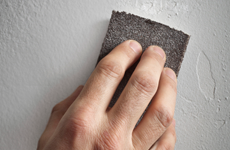
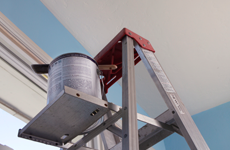
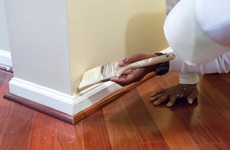
Painting Success Starts with Prepping
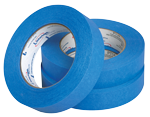
You may want to avoid paint prep because it is time consuming, but skipping it will cause delay, frustration, and jeopardize the success of your project.
Whether you are painting interiors or exteriors, you'll want to:
- Clear the area of furniture and breakables
- Use tarps, drop cloths, or masking paper to protect floors
- Tape off windows, mirrors, trim, etc. Press and smooth your tape with a putty knife to keep paint from seeping under the tape's edge. Remember to remove it before the paint has completely dried for a perfect edge.
- Fill nail holes, dents, cracks, etc. See more about patching and repair
- Scrape and sand off old paint
- Clean the surfaces to be painted with a wet rag
- Prime as needed
Preparation will vary depending on the surface you are covering so make sure you learn more about both interior prepping and exterior prepping for your various projects.
Painting Techniques
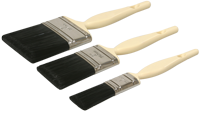
There is a trick to every trade, and painting is no different. Here are tips to guarantee professional results:
Paint Brush Techniques
- Hold the paint brush near the base of the handle
- Dip the brush in the paint no further than half way up the bristles.
- Use small brushes, 1 to 2 inches, to cut in about an inch from the ceiling, baseboards, or edges where rollers may touch
Paint Roller Techniques
- With a paint roller, roll the full height of the wall
- Overlap edges of rolled areas for full coverage
- Use a long nap for porous textured walls; use a short nap for smooth surfaces
- Where you cut in the corners with a brush, go over the edges for a consistent finish
General Painting Tips
- Paint the trim first, then the ceiling, walls, and floors
- Be mindful of the weather and temperature. A sudden rise in temperature or direct sunlight can cause paint to blister
- Use high-quality paints and tools for the best results
Painting Difficult Areas
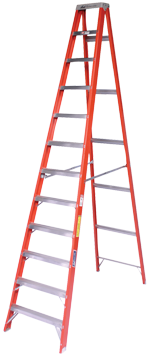
You may be faced with painting some unusual items. Here are some tips on painting difficult areas.
Painting Wrought Iron
Prep by using a sponge-block sanding pad to get around the crevices of wrought iron fences or furniture. Remove any dust by wiping before priming. If you decide to spray paint your wrought iron, be sure to hang a tarp or place a plywood board behind the iron to prevent spray from getting on the ground or other surfaces.
Painting Stairs
Use painter's tape to mask off areas you don't want painted. Use porch and floor enamel on the stairs and risers. A smaller paint roller will give you better control in narrow spaces. Start at the top of the steps and then paint the riser.
Painting High Areas
If you're painting high areas, have a ladder and telescoping polls for rollers and brushes. For extremely high areas, you will want scaffolding as well. Here are some tips on high area painting success:
Painting Trim
- Sand with 120-grit sandpaper
- Fill in the holes, dents, and cracks with spackling compound and allow it to dry
- Sand areas where you applied compound, and clean off the dust
- After applying painter's tape, paint the trim with primer and allow it to dry
- Apply paint over the trim using short horizontal brush strokes
- When the paint has dried, remove the tape
Painting Ceilings
- Cut in a three to four inch wide area around the perimeter of the room
- Using a paint roller, roll in one direction toward the opposite side of the room
- Don't roll in a 'V' pattern. Slightly overlap straight rows of paint
- If you need a second coat, paint rows perpendicular to your first coat
Retouching & Storing Paint
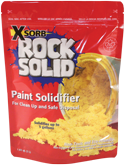
Stock up on extra paint for touch ups. You don't want to run out of a color and find that you can't match it. Reformulations can make it difficult to get a matching paint shade.
When storing opened paint, never leave roller covers or paint brushes in the paint containers. They tend to cause mold and mildew.
To extend the life of your paint, keep it tightly sealed and stored at an ideal temperature, somewhere between 60°F and 80°F. If your paint has expired, dispose of it properly with products such as Xsorb, which solidify paint. Be sure to follow your local and state regulations regarding paint disposal.
